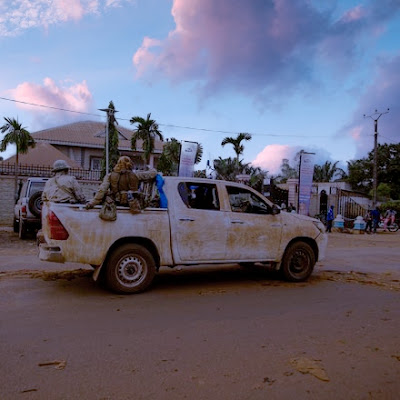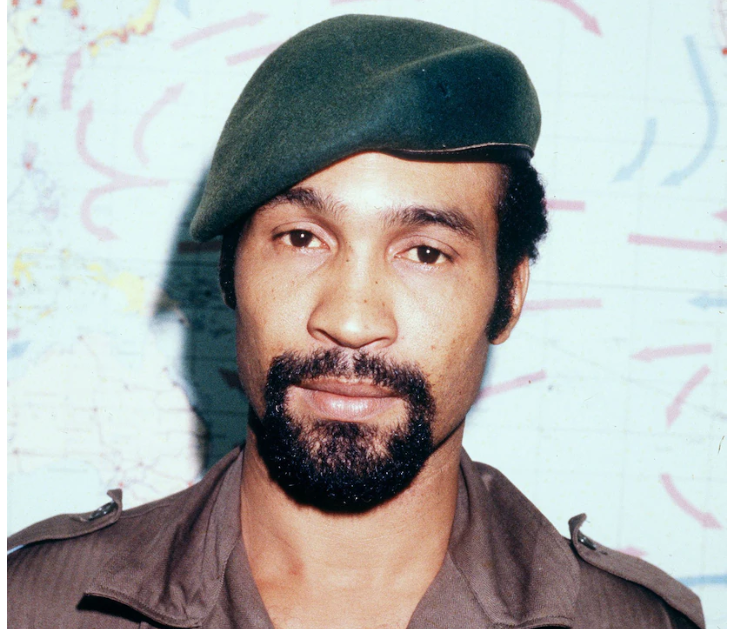The Central African Republic is more than simply a geopolitical sideshow. Europe must show itself as a viable alternative to Russia.
Even before the conflict in Ukraine broke out, there was a lot of heated discussion about how and why Russia was seeking to extend its spheres of influence throughout the globe, particularly in Africa. The geopolitical confrontation between the “new” participant Russia and the “old” colonial power France must take place in the Central African Republic (CAR), which must serve as the venue for the competition. Even the ponderous institution of the peace mission has to be assessed against the active engagement of Russian private security corporations in this nation.
It would seem that the Central African Republic has provided the template for a reorientation of African governments on the global arena, which is now being replicated in Mali. Central Africa, on the other hand, is not only the target of international tests of power; rather, it has both a government and a populace that behave logically. Why did the government of ZAR make a deal with the infamous Wagner group? What were their goals in doing so? Why did the local populace greet the Russian mercenaries with open arms? Were the groundwork for long-term collaboration and trust built here?
The government’s dissatisfaction with its other foreign partners was the impetus for the military collaboration, which was facilitated by a deft maneuver on Russia’s behalf. After the civil war that lasted from 2012 to 2014, the United Nations peacekeeping operation was able to at least restrict the battle and confine armed groups territorially due to its statewide presence. This was accomplished after the war. On the other hand, they often reacted slowly to assaults by rebels and did not actively engage in combat with them. This gave both the populace and the government the notion that the only way to defeat the rebels was with the help of their own troops.
Despite this, the military of Central Africa has been in a deplorable condition for a very long time, and it has all but fallen apart as a result of the civil conflict. The prevalent story asserts that a ban on weapons imposed by the United Nations was responsible for preventing its revival. Russia took advantage of this sentiment in order to get what was presented as a one-time exception from the embargo and then supplied the Central African military with weapons manufactured in Russia. This entailed receiving rudimentary instruction in the use of these weapon systems, for which a few hundred people who called themselves “military trainers” were sent.
This collaboration didn’t truly pick up steam until the end of the year 2020, when a new rebel coalition stormed the capital and threatened to topple the government. The Central African Army, together with the assistance of Russian militias and Rwandan military forces, was successful in fending off this onslaught. Nevertheless, what is sometimes overlooked is the reality that the peace mission also played a significant role in ensuring that the rebel coalition was unable to broaden its scope of operations. The Russian army and Wagner militias launched a counteroffensive, which resulted in the retaking of almost all of the country’s main cities within a single year. The narrative that the peacekeeping operation, which had been ineffective for seven years, was not a dependable partner in the fight against the rebels was strengthened as a result of these swift successes. The conviction grew in scope.
Conquering regions, on the other hand, is much simpler than governing them. It is ludicrous for players in Europe and the United States to expect that the collaboration with Russia would continue indefinitely. It would seem that support for the Russian mercenaries is still rather popular, despite the fact that they have been shown to have committed an increasing number of crimes against the local community. However, what seems to be the case, such as reporting in the media, polls, and qualitative research, are all misleading. An actor who, after 10 years of civil war, was responsible for driving out the rebels should hardly be a surprise in terms of his level of excitement. Second, Russian actors purchase a large number of media stories and conduct protests either in support of Russia or in opposition to Europe. Third, in an atmosphere that is becoming more restrictive, it is very unusual for individuals who are victims of Russian acts or opponents of Russian actions to be able to speak out openly.
At the same time, there were distinct grounds of contention that had been predetermined in ordinary collaboration. For instance, some Central African interlocutors believe that atrocities are committed by the government and Russian mercenaries, but that these crimes are less frequent than those committed by the rebels whom the government defeated. In addition to this, this is because of the difficult nature of military offensives. However, if Russian atrocities persist, recollections of the days when rebels ruled will eventually be forgotten.
For instance, in a city that was just recently liberated a year ago — a rebel bastion for years whose names I cannot disclose for reasons of security — the public discourse does not at all center around the concept of “liberation.” On the other side, claims of theft leveled against the Russian forces were the primary focus of attention. Since the beginning, the legality of French and United Nations striking troops has been called into question despite the fact that these claims are often false.
The manner in which Europe is now responding to the deployment of Russian troops in Central Africa is inappropriate. The freezing of military and financial assistance gives the impression that it has already been determined that the Russian presence will be there indefinitely. Since Russia invaded Ukraine, this strategy gives the impression that the CAR is being punished for its “deal with the devil,” which occurred prior to the war. The people and actors in Central Africa are undervalued in terms of the value placed on their rational capacity to behave. Russia was purposefully given permission to enter the nation as an alternative to an intervention from the West, which Central Africans saw as having been unsuccessful.
A meaningful collaboration on an equal basis should be sought after rather than reducing Central Africa to a sideshow in a larger geopolitical conflict. It seems that every every day, new crimes that were carried out by Russian actors in Central Africa are brought to light. The behaviors of such individuals, who are racist, are especially abhorrent to the Central African military. Now it is up to Europe to present itself as an alternative to the United States. This requires, first and foremost, giving significant consideration to matters of safety, which necessitates the transformation of the European training mission into a countrywide escort operation. In a nutshell, this implies that the roughly 2,000 Russian militia members who refer to themselves as “instructors” will be replaced with a comprehensive EU-UN logistical training and logistics network. That is the very bare minimum that can be provided by Central Africa.
Above all else, however, it means ultimately shifting away from the primacy of the military and putting the focus on a broad-based civil partnership rather than the military’s role in the conflict. The establishment of more European embassies is a potential first step. Only France, a former colonial power, may be found on the premises at this time. The formation of institutions that are part of civil society need to be aggressively encouraged, and a conversation ought to be started. It has been shown through experience that such a strategy is at least as promising as military tactics when it comes to reducing violence and promoting peaceful cohabitation.
The author Tim Glawion, Ph.D is a Research Fellow at the GIGA Institute for African Studies.

















+ There are no comments
Add yours